When Life Gives You Cabbages, Make Sauerkraut
Also, how my ex-husband and I set a record in a Parisian restaurant that impressed even the French.
Hello, my friend,
My family and I have come to the conclusion that cabbage is a very underrated vegetable.
First of all, cabbage is very good for you — it’s a cruciferous vegetable that, if I were a doctor and knew about such things, is high in fiber and packed with Vitamin C — and it’s inexpensive. One head of cabbage can go a long way when it comes to feeding your family.
Second, you can do so much with it. You can slice it into salads, wrap it around fillings to make rolls, make it a base for soup, and make coleslaw and sauerkraut out of it. We even use it sliced thinly and sautéed as a low carb substitute for noodles in ramen.
Needless to say, cabbage is on my shopping list every week.
Sauerkraut, that tangy, sour, crunchy condiment that Americans like to put on top of hot dogs, is usually the first project that new fermenters try out, simply because it’s so easy. We’ve already made pickles, so consider yourself a somewhat advanced fermenter.
But since this is so easy — I mentioned that it’s easy, right? — I thought we should give it a whirl. Here’s the basic recipe for sauerkraut:
Cabbage + salt + time = sauerkraut
Seriously. That’s it. Oh, you can zhuzh it up some, but it’s ridiculously easy to make a plain, delicious-you-won’t-believe-you-made-it batch. And, like most fermentations, it adheres to the rule that the longer it sits, the better it gets.
Today, we’re going to talk about making that batch of sauerkraut and the option of using your King Midas superpowers to turn it into golden sauerkraut. (Spoiler alert: All the King Midas superpower consists of is the ability to drop a spoonful of turmeric into your concoction. See? I told you this was easy.)
OK, recipe first and then story time. You will want to stick around for that, because it involves the triumph of the indomitable, American “can do” spirit over the general snarkiness of the French. Actually, it has to do with us making pigs of ourselves, but I’m pretty sure they still talk about us in that brasserie on the Rue de la Bastille.
Sauerkraut Recipe
A quick reminder about what fermentation is and how to do it
1 head green cabbage1 , cored and sliced thinly (Remove one or two of the large, outer leaves and set aside)
5 Tbsp. kosher salt, divided (2 Tbsp. will go on the sliced cabbage, and 3 Tbsp. will be mixed into water to make extra brine)
4 cups filtered or spring water (do not used chlorinated water)
1 bay leaf
1 tsp. caraway seeds, for flavor (optional)
1 Tbsp. powdered turmeric (optional, if you want to turn your sauerkraut a lovely golden color)
A Sauer Stomper, to help pack the cabbage into the jar (highly optional: You can use a potato masher or whatever fits into the neck of your jar, but I love toys, so I bought one of these)
1 half-gallon mason jar or any glass container that will accommodate a lid with an airlock)
Make sure that your equipment and your hands are very clean. I know, the pandemic is still on and you wash your hands repetitively, but we are going to be manhandling the cabbage, so your hands need to be very clean. Remember, the only bacteria we want growing here are our friends, the lactobacilli.
Place the sliced cabbage into the biggest bowl you have. You will be massaging (yes, you read that right) and tossing the cabbage a lot, so give it room.
Sprinkle 2 Tbsp. of the kosher salt over the cabbage. The salt will draw the water out of the cabbage and help make the brine. Mix the salt in to the cabbage and get ready to give your cabbage a spa day.
Massage the cabbage by squeezing it through your hands and turning the cabbage so you can grab a new handful to squeeze. You will need to do this for about 10 minutes. The cabbage will begin to release water and become slightly limp, but don’t worry. It will retain a nice crunch.
If you are using the caraway seeds, sprinkle them over the cabbage now and massage in.
Place a bay leaf at the bottom of your very clean jar. This will add some flavor, but it’s also there to help retain the crunch of the sauerkraut.
Pack the salted cabbage into the jar. I used to have a canning funnel that made this sort of thing much easier, but it got lost in a move and I haven’t yet replaced it. You and I can do this the old school way, with our hands.
Pour any residual brine from the bowl into your jar.
While you are packing, you will notice that you are running out of room, and that there isn’t that much brine. Have I got a toy for you! It’s called a Sauer Stomper, and it’s basically a small baseball bat that you use to “stomp” your sauerkraut down into the jar. I got mine from Humble House, but there are a lot on the market, and you can also use a potato masher if you are so inclined.
If you do not have enough brine from stomping and massaging the cabbage, mix the other 3 Tbsp. of salt into 4 cups of filtered or spring water to make a basic brine. Pour some of that into your jar until it reaches about an inch below the shoulder of the jar.
When the jar is filled to about an inch below the shoulder of the jar, take the large, outer cabbage leaf and fold it so that it will cover the cabbage. This may require a little finagling. We are placing this here to help keep the cabbage under the brine, because we need an anaerobic environment, remember? Oxygen bad. Oxygen produces mold. If a strand or two is above the leaf, don’t worry about it. The important part is that the majority of the cabbage should be submerged below the brine. If your large leaf will not stay down, put a clean pickle stone on top.
That’s pretty much it, but if you would like to make the golden sauerkraut, instead of pouring plain brine in, mix the turmeric into the 4 cups of water until the powder dissolves. It will become a bright yellow and may be somewhat opaque.
Here’s what they should look like if you are making golden sauerkraut.
Remember to use a top with an airlock, so that the CO2 released from the bacteria will be able to escape and no oxygen can get in. Very important: LABEL YOUR PRECIOUS with what you made and the date. The reason this is important is because the date will remind you how long it will take until your sauerkraut is completely sour and delicious.
But when will my precious be ready to eat, Deb?
It will depend on the time of year (cold weather slows down fermentation, hot weather speeds it up). It may take between a few days to a week or two for fermentation to take place. The important thing to remember is that this precious only improves with age.
Once the bubbling stops, place it in the back of your fridge and forget about it. I promise you that after a month or so, it will be perfection.
Of course you can taste it before then; what kind of a silly question is that? It’s the only way you will know when it’s perfect for your tastebuds, and only you know that.That American “Can-Do” Attitude I Was Talking About
Ready for a story? Everyone comfortable? Good. Let’s begin.
Once upon a time, there were two people who were young, in love and happened to have excruciatingly fast metabolisms. That may seem like a non sequitur, but it will become important later.
They got married, as people who are in love and have excruciatingly fast metabolisms are wont to do, and they decided to go to Paris on their honeymoon. The City of Love … what could be more romantic?
One night, the newly married couple decided to go to a brasserie called Bofinger for dinner. Being Americans, they pronounced it “Bow finger” until they were informed by the waitstaff that the French pronunciation — and therefore the correct one — was “Boh-feen-jhay.” That was good enough for the couple. They were there for the food.
Anyway, what lured the couple to this particular brasserie in the Bastille section was its legendary “plat du royale,” an extra-large, table-sized platter packed with some of the freshest and most delicious shellfish they had ever tasted. Some of them were crustaceans they had never even seen before, but the couple cared not. The chef could have thrown a spark plug on the platter and they would have eaten it, because the food was French, and they were young, in love, and had excruciatingly fast metabolisms. They made quick work of it.
Everyone knows that a platter of shellfish is not exactly “stick to your ribs” filling, so they ordered a second one. This raised the eyebrows of the waiter and several other servers in the vicinity, but they delivered a second platter. By now, a few of the servers had begun inching slowly toward the couple’s table, eager to see whether it would be too much for the Americans.
They finished it, and just as the waiter was removing the mess of shells from the table, another server walked by carrying a tray that smelled delicious.
”What is that?,” the wife asked.
”That is choucroute, Madame,” the waiter said. “It is Alsatian, a platter of our finest sauerkraut accompanied by our own sausage and ham.”
The couple, who had not eaten Alsatian food before, agreed that it sounded wonderful. They ordered the choucroute, noticing only peripherally that some of the servers were dragging chairs closer to their table, yet maintaining a polite distance. The servers were gazing at them intently.
The platter arrived, and it was just as wonderful as they had anticipated. The couple, with their excruciatingly fast metabolisms, polished off the entire thing.
As soon as the last bite was consumed, the servers who had migrated to within inches of the couple’s table leapt to their feet and began to applaud. Shouts of “Bravo!” filled the air. Some of the other tables began to applaud politely as well, probably assuming that it was someone’s birthday.
Decades later, the couple went their separate ways — for reasons other than the Bofinger choucroute — and their metabolisms slowed down with age. But the wonderful memory of the food and the time that they brought a group of jaded French servers to their feet remains. Proust had nothing on them.
And that, my friend, is why we are making sauerkraut.
Until next time,
Deb
You can make a wonderful sauerkraut with red cabbage and apples, but we are going to stick to the basics today.

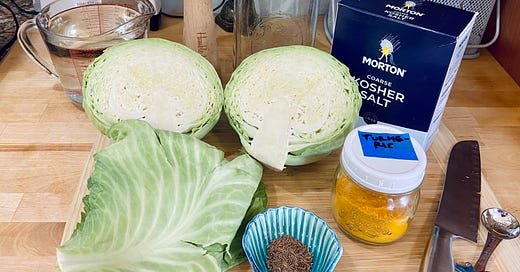




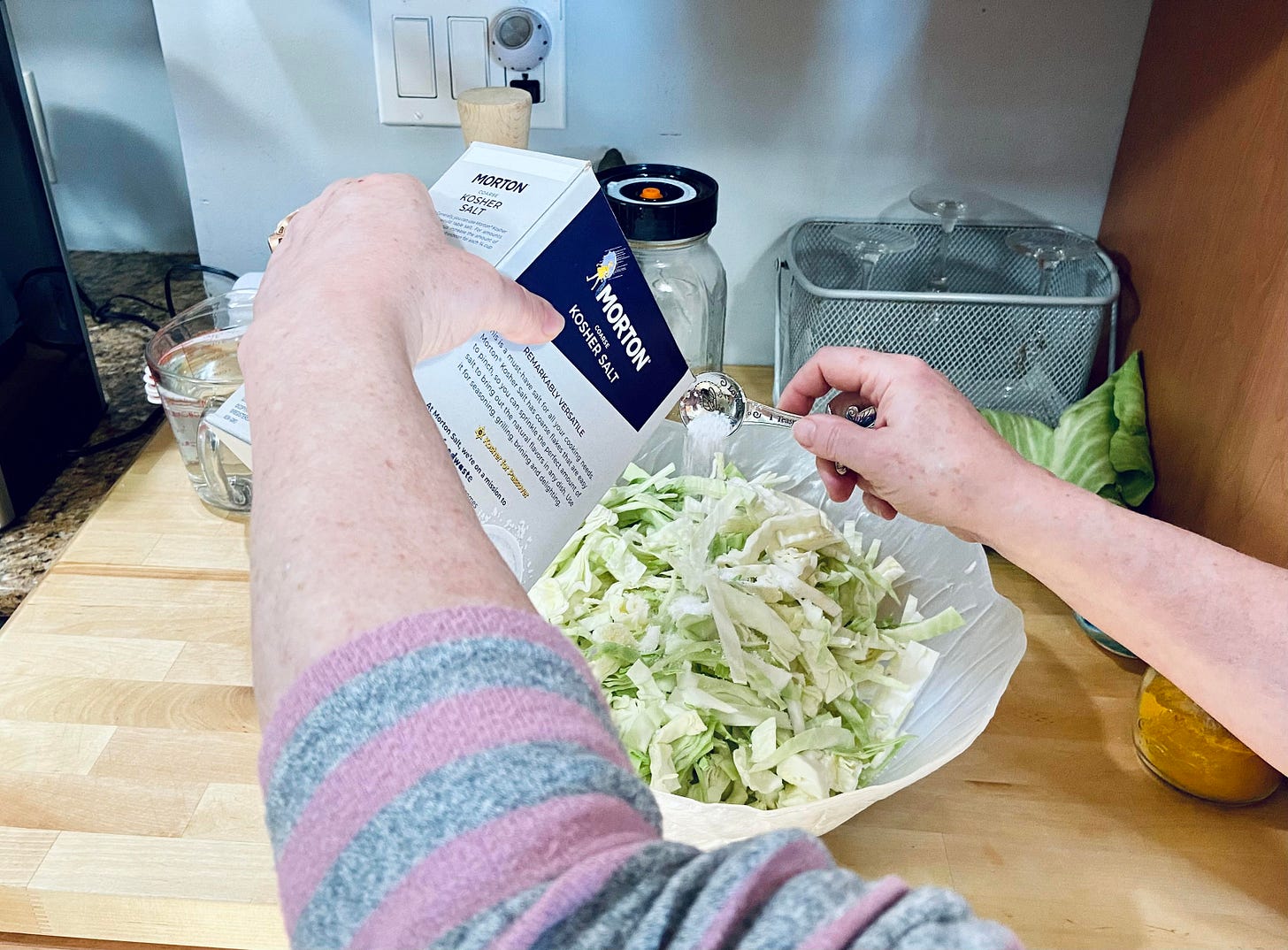
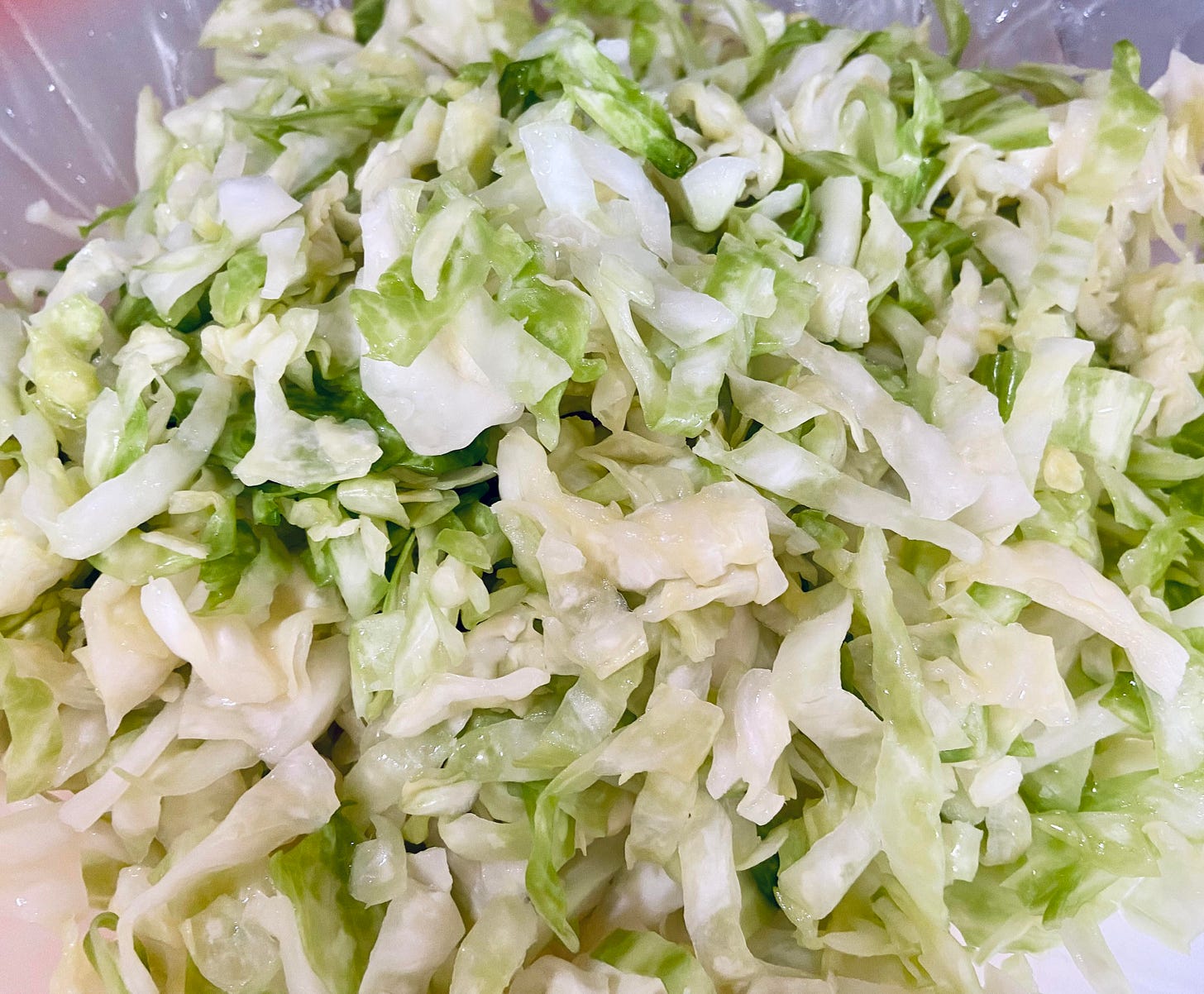
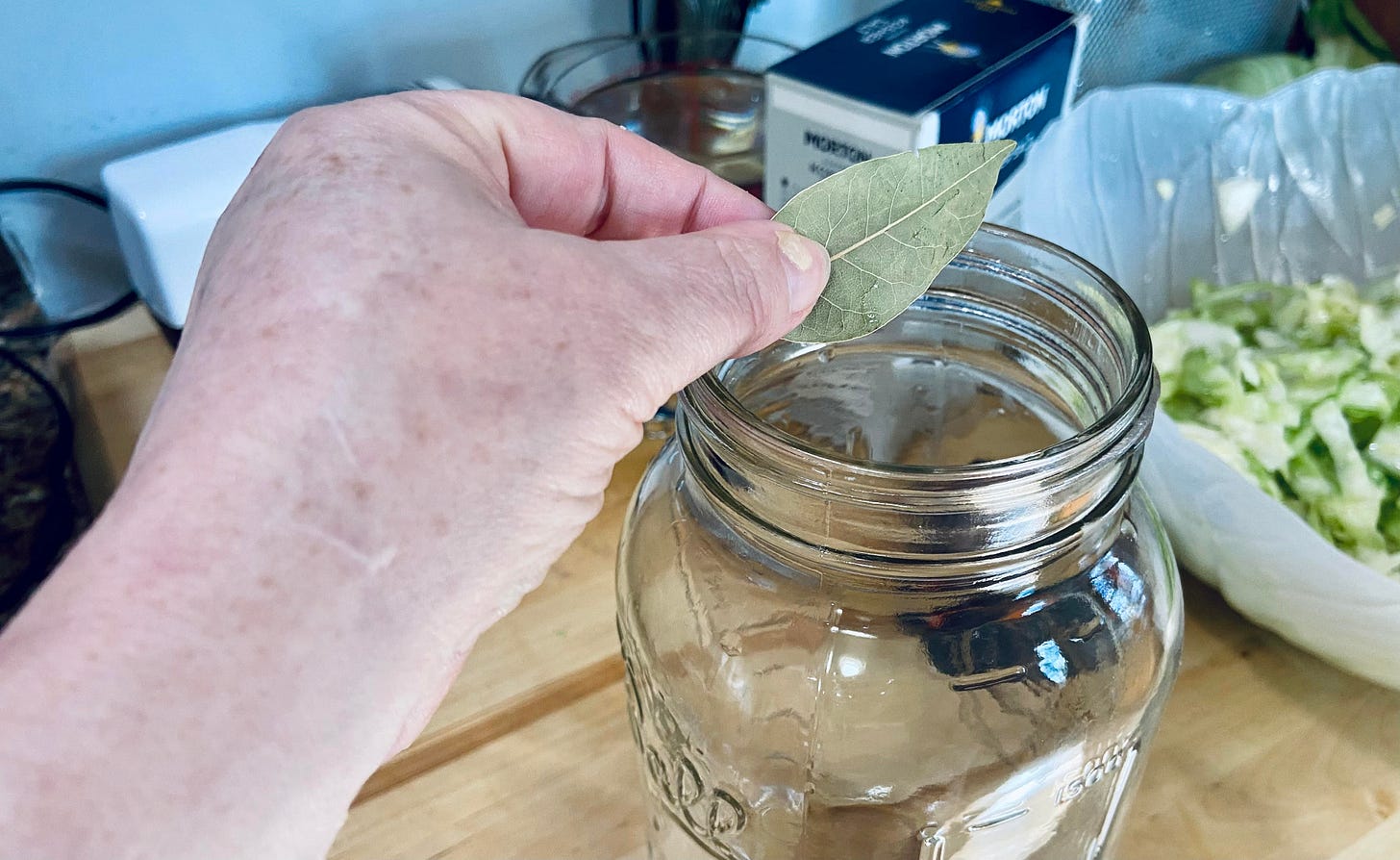
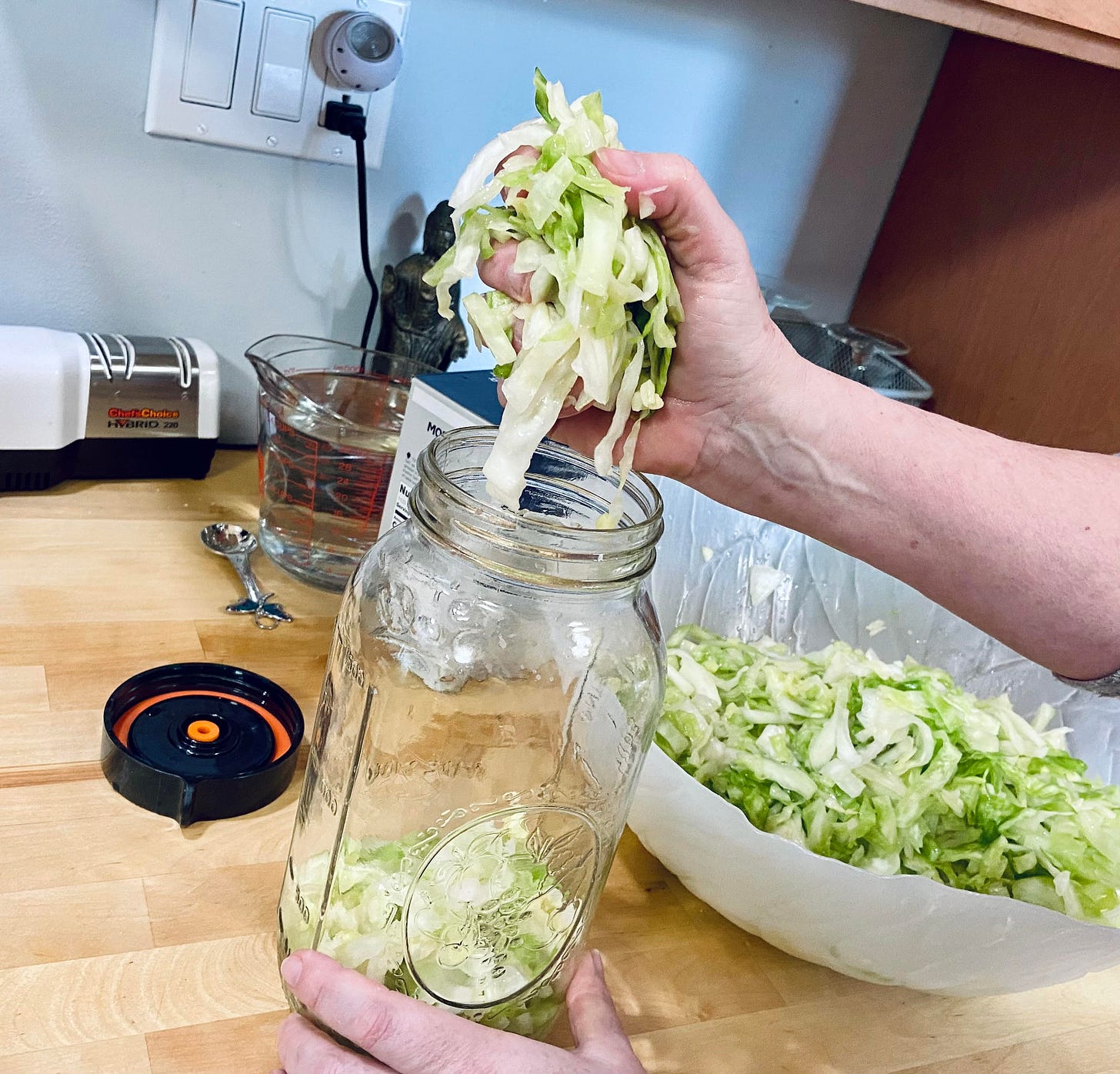
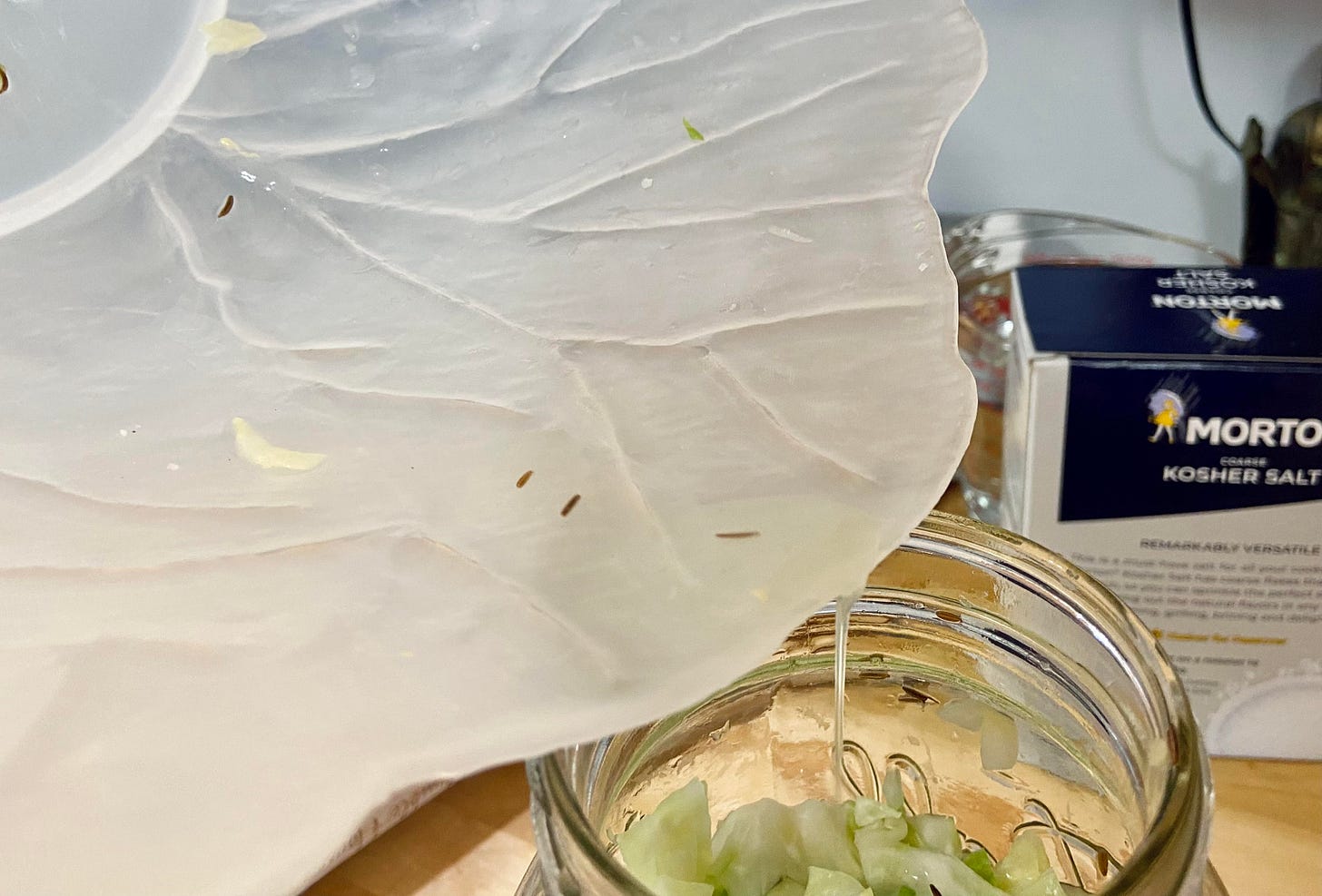
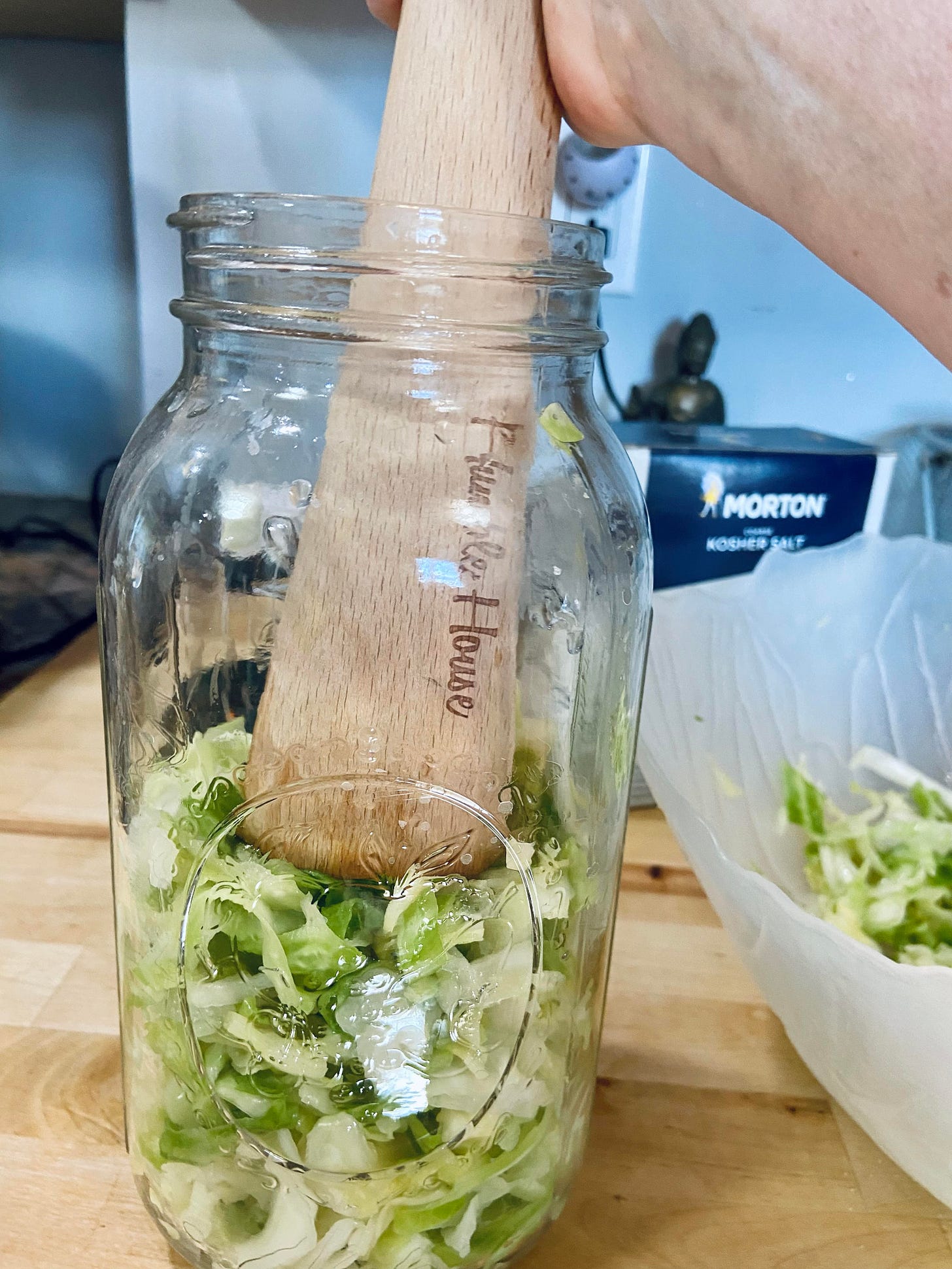
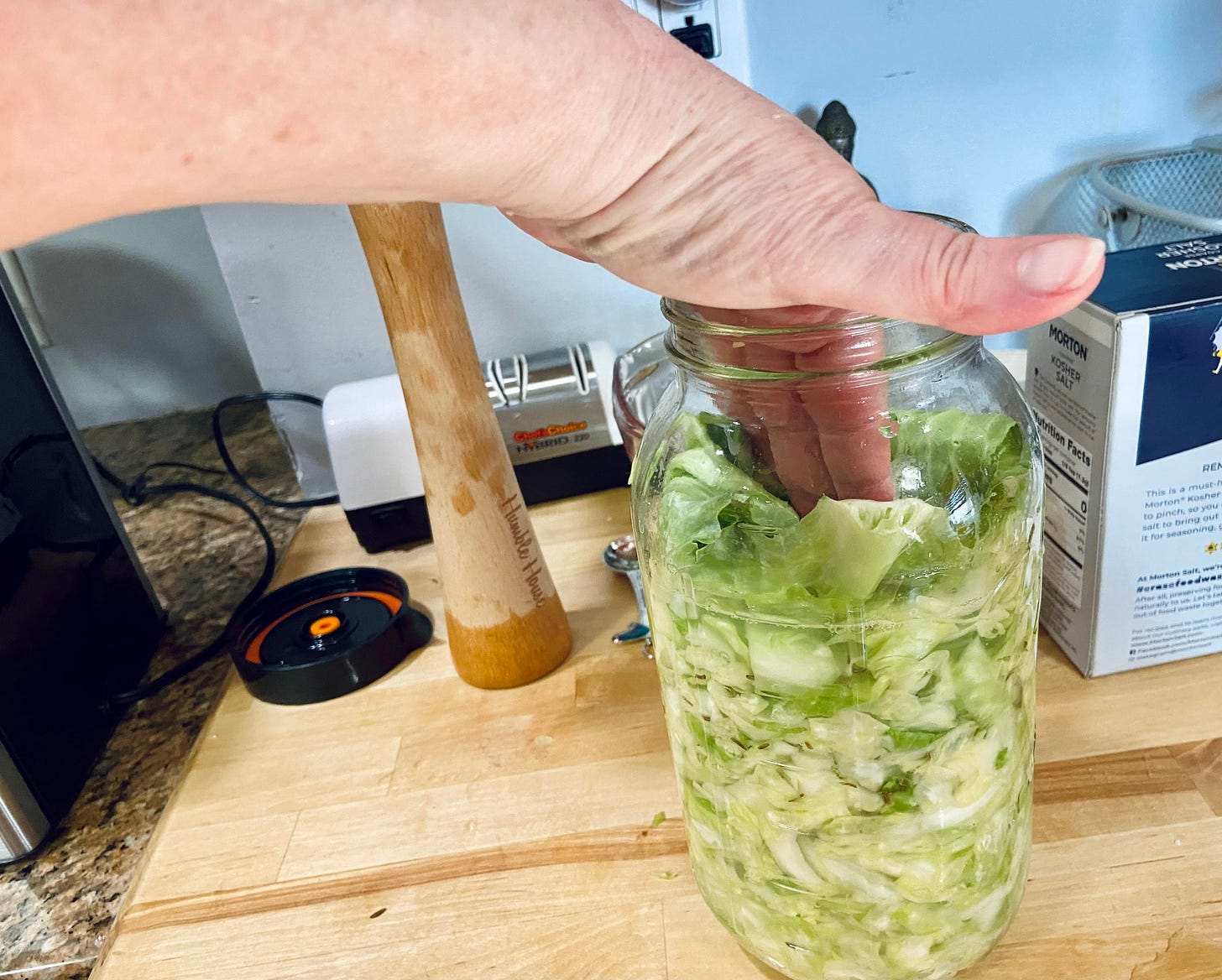
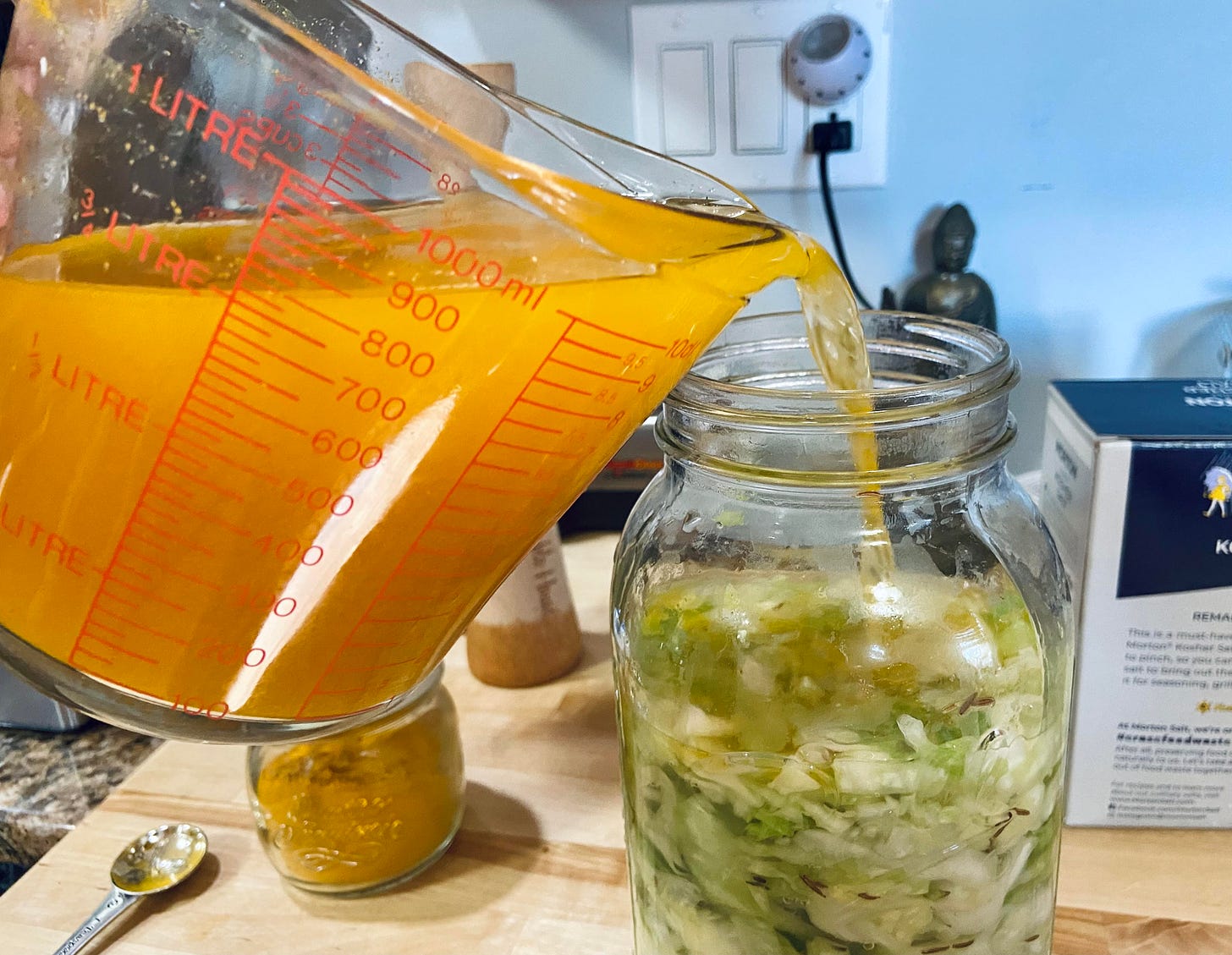
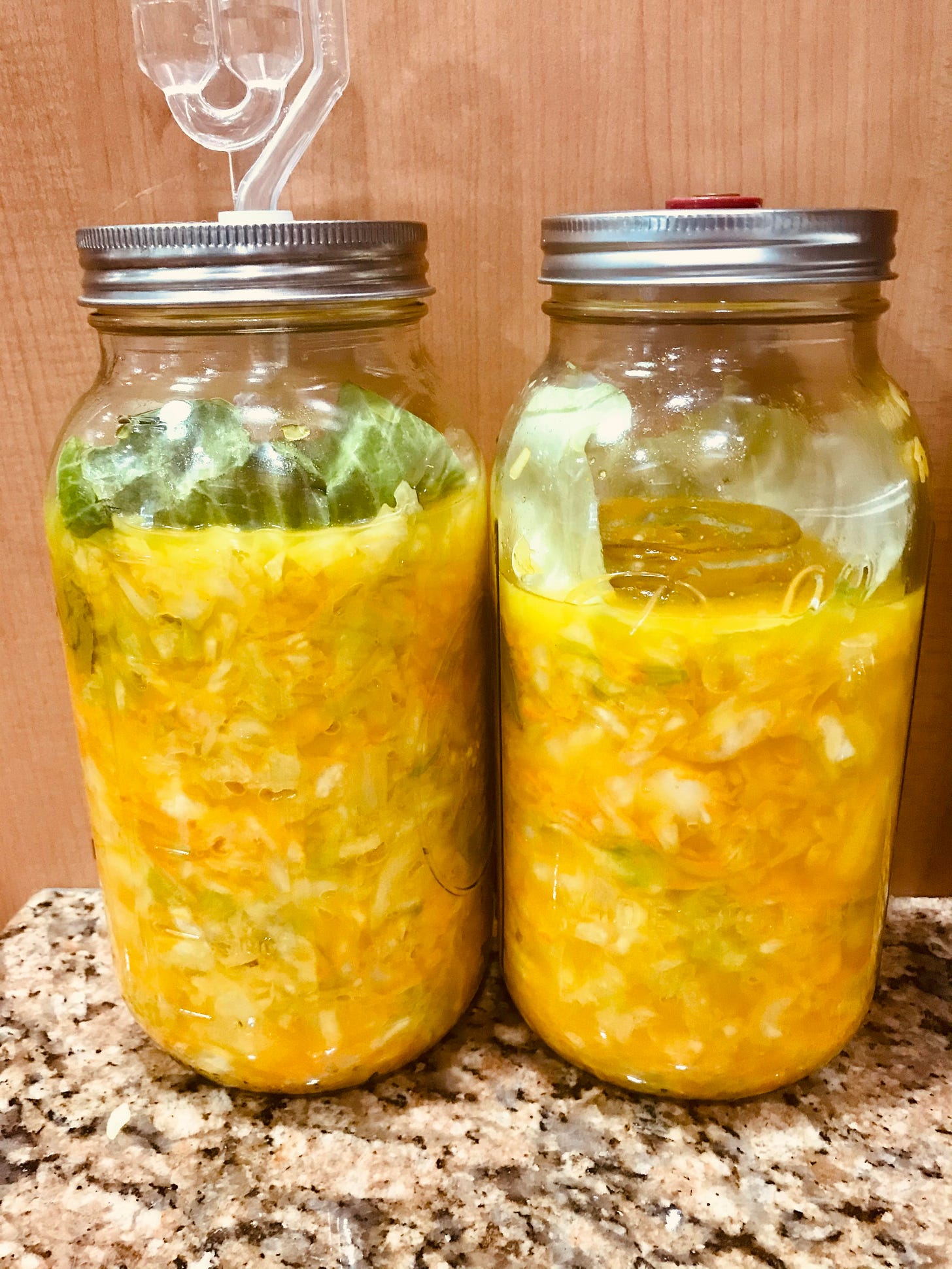
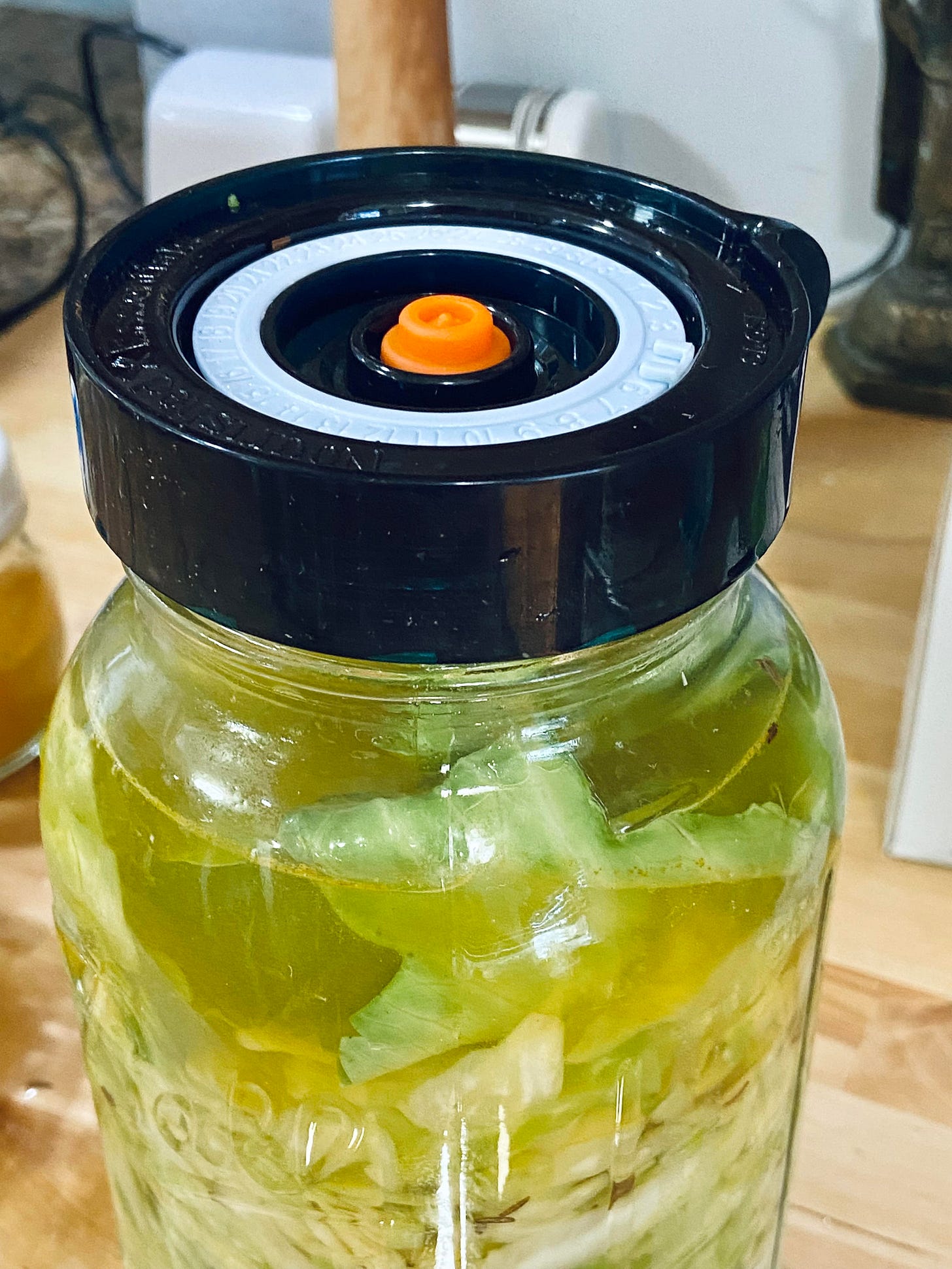
I can't believe I'm saying this, but I am now inspired to try making my own sauerkraut!
Also, I love the Bofinger story. Makes me homesick for France (which is not actually my home), and reminds me of a similar seafood-loaded night with my ex-wife in Tokyo.